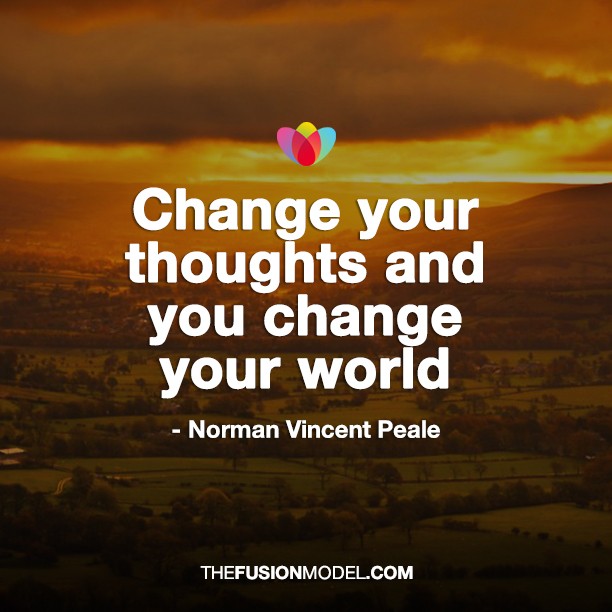There is no point having a theoretical understanding of the science behind emotional wellbeing without having a practical way of using that understanding to help you in your everyday life.
Many people regularly practise meditation for instance, and know why it should be helpful for them, yet still experience difficulties translating that into real life; with all its ups and downs and unpredictability’s.
Having a theory, or model, is certainly helpful, but what can be missing, is an effective system which fills the theory-application gap. That’s where many find the Fusion approach to emotional resilience really helpful, because it is both a model and a system.
Fusion draws on a ‘recipe’ for emotional well-being, plus a user-friendly method for emotional intelligence. With emotional intelligence, we can learn to ‘stop and tune in’ to the messages our instincts and emotions send us, so we can mindfully respond to life rather than mindlessly react.
Once we learn these essential skills, we are fully ‘armed’ for a life of emotional resilience and wellbeing. We know how to make stress work for us not against us. In other words we learn stress management.
A good starting point is to find out more about your brain and how it works. There is so much amazing information now emerging from the new brain sciences.
It can help to think of your brain like a computer; understanding how it works will help you update your software, so it runs smoothly and efficiently. Or you might even think of it as a bit like a high performance car.
Learning advanced ‘driving skills’ will help you get the best from it so you can travel at high speed….. yet stay safe too. Start with these 7 essential skills:
# 1 Learn to spot the signs of stress
Get familiar with what an emotional hijack looks and feels like. Learn to ‘tune in’ to the signs and symptoms of an adrenaline rush. Mindfulness can really help with this as it encourages you to notice thoughts and feelings without clutching at them or being dragged along with their, often harmful, effects.
If you can recognise fight or flight symptoms early, you will not be surprised or frightened by them. Knowledge is power. Mindful awareness empowers us and creates choices. What stays in the unconscious mind has the potential to control our behaviour without us understanding why.
#2 Use the STOP System™
The STOP System helps create ‘a window of awareness.’
Think of a STOP sign. Imagine standing at a fork in the road. You now have the time to choose which road to travel.
When you STOP and make a good choice, you respond rather than react.
#3 Find out how to programme your internal ‘satnav’
What we focus on is what we get. The trouble is many of us focus on frightening or negative outcomes which then draw us towards them like an invisible, yet powerful, magnet.
Get your imagination working for you, by asking yourself this question:
‘If I had all the time, money, energy and resources I needed, and failure was not an option, what is the life I would be living that would make me really happy?’
Consider areas like work, money, health, partner, family, friends, learning new things and home.
# 4 Make friends with your emotions
Learn to recognise your emotions by being mindfully aware.
Where in your body would you sense fear? How would you recognise anger? What does ‘the red mist’ feel like and how would you recognise when your reward systems are being hijacked, making you vulnerable to addiction?
Sometimes we can mistake sadness for hunger or even hunger for sadness. It really pays to learn to ‘read’ your emotions. It’s what we call emotional literacy.
#5 Start zapping NATS
Try to ‘catch’ the negative automatic thoughts we all experience from time to time, and replace them with positive automatic thoughts (PATS) instead. That way you become your own best friend instead of your own worst enemy.
Why run background stress when you could choose background happiness?
Why say things to yourself that you would not dream of saying to someone else? Fortunately, we can only think one thought at a time. Have a positive thought or affirmation ready for when you notice a NAT and need to ‘zap it’.
#6 Rewire your brain
Rewire your brain for happiness with positive self statements. Regular repetition forms new, more helpful neural pathways in the brain.
The more you say them to yourself, the better they work. Sayings such as ‘I can do this’ or ‘yes I can’ are great examples. The tried and tested one is ‘every day in every way, I am getting better and better.’
#7 Practise being mindful not mindless
The theory of mindfulness is simple.
The brain is a muscle. The more you train it to ‘focus in a detached way’, the stronger it gets.
Sit quietly, close your eyes and begin to focus on your breath. Notice how it moves in and out of the body. Notice the warmth or coolness of the breath.
Be aware of sensations in the body and thoughts that may ‘catch’ your attention. Simply let them pass by like fish or clouds. Count as you breathe. It helps you focus your attention.
Practise this for a few minutes or longer, once, or better still, several times a day.




